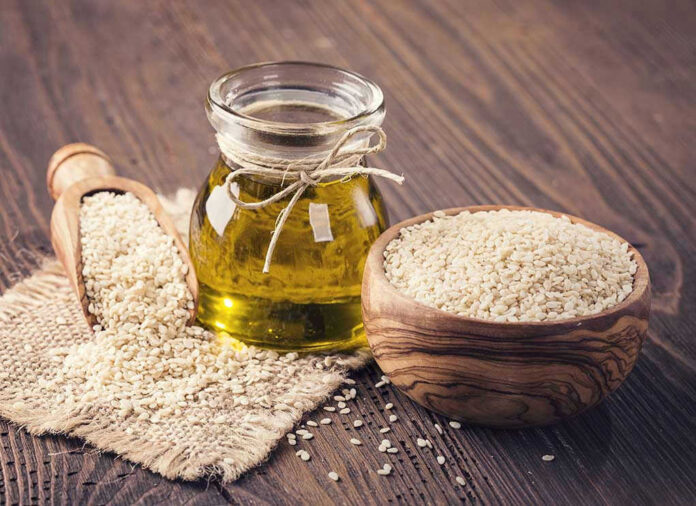
The cooking oils sitting in your pantry right now are probably degrading faster than you think, quietly losing their nutritional value and developing harmful compounds that could undermine your family’s health with every meal you prepare.
Story Snapshot
- Most cooking oils require specific storage conditions based on their fatty acid composition, not just general pantry placement
- Oils high in polyunsaturated fats demand refrigeration to prevent oxidation and free radical formation
- The ideal storage temperature for most oils falls between 55-60°F, significantly cooler than typical kitchen environments
- Purchasing more oil than you can use within 6-12 months guarantees you’ll be cooking with rancid fats
- Five essential oils cover virtually every cooking need when selected and stored properly
The Chemistry Behind Oil Degradation
Understanding why certain oils spoil rapidly while others remain stable for months requires grasping basic fat chemistry. Polyunsaturated fatty acids contain multiple double bonds that make electrons “quickly drawn from other carbon atoms, leaving the carbon’s hydrogen open to abstraction and free radicals formation.” This chemical vulnerability explains why oils rich in these fats oxidize rapidly when exposed to heat, light, or air. Monounsaturated fats offer superior resistance due to having only one double bond, while saturated fats lack double bonds entirely, providing exceptional stability at room temperature.
Olive Oil: The Mediterranean Cornerstone
Extra virgin olive oil dominates healthy cooking discussions for good reason. With monounsaturated fat content exceeding 73 percent, it offers substantial oxidation resistance while delivering cardiovascular benefits supported by decades of research. However, this doesn’t mean carelessly storing it above your stove. Bulk purchases or storage in warm climates necessitate refrigeration to preserve quality. The clouding that occurs when chilled represents a normal physical response that reverses at room temperature. Use extra virgin varieties for salad dressings, finishing dishes, and low-heat cooking, reserving refined olive oil for higher temperature applications.
Smart cooks maintain two bottles: a premium extra virgin for raw applications where flavor shines, and a less expensive refined version for everyday cooking. This strategy maximizes both culinary results and budget efficiency without compromising health benefits.
Avocado Oil: The High-Heat Champion
Avocado oil has emerged as the superior choice for high-temperature cooking, boasting a smoke point that surpasses most alternatives. Its 70 percent monounsaturated fat composition provides stability at room temperature while delivering a neutral flavor profile that won’t compete with your ingredients. Unlike more delicate oils, avocado oil tolerates cabinet storage at moderate temperatures without rapid degradation. The mild taste makes it ideal for sautéing, roasting, and grilling where you want the food’s natural flavors to dominate rather than the cooking medium.
Coconut Oil: The Saturated Fat Survivor
Coconut oil’s 90 percent saturated fat composition makes it virtually indestructible under typical storage conditions. This stability comes from the absence of vulnerable double bonds that plague unsaturated fats. While controversy surrounds saturated fat consumption, coconut oil’s medium-chain triglycerides behave differently metabolically than the long-chain saturated fats in animal products. Its unique flavor profile works beautifully in baked goods, Asian-inspired dishes, and any recipe where a subtle coconut note enhances rather than detracts. The solid state at room temperature adds versatility for certain baking applications where butter alternatives are needed.
Sesame Oil: The Flavor Specialist
Toasted sesame oil functions as a finishing oil rather than a primary cooking medium. With 40 percent monounsaturated fats and 42 percent polyunsaturated fats, refrigeration becomes essential for preserving its distinctive nutty character. A few drops transform stir-fries, noodle dishes, and marinades with complex depth that no other oil provides. The high polyunsaturated content that necessitates cold storage also explains why sesame oil shouldn’t be used for high-heat cooking. Purchase smaller bottles since a little goes a long way, ensuring you consume it while freshness peaks.
Many home cooks make the mistake of treating sesame oil like other cooking oils, using it for sautéing and then wondering why dishes taste bitter. The key lies in adding it at the end of cooking or using it raw to preserve its aromatic compounds.
Peanut Oil: The Deep-Frying Workhorse
Peanut oil’s 46 percent monounsaturated and 32 percent polyunsaturated fat balance creates a sweet spot for high-heat applications while maintaining reasonable shelf stability. Southern cooks have relied on peanut oil for generations when frying chicken, fish, and vegetables because it delivers crispy results without imparting unwanted flavors. The relatively high smoke point accommodates deep-frying temperatures while the moderate polyunsaturated content means it won’t immediately oxidize like more delicate oils. Store it in a cool, dark cabinet away from heat sources, and it will serve you well for months.
Storage Protocols That Actually Work
Temperature control determines oil longevity more than any other factor. The ideal range of 55-60°F falls well below typical room temperature, meaning that cabinet next to your stove represents the worst possible location. Dark glass or metal containers protect against light degradation while airtight seals prevent oxygen exposure. Regular quality checks for unusual odors or color changes alert you to oxidation before you consume rancid fats. Refined oils maintain quality for approximately one year unopened and five months after opening, while extra virgin olive oil demands faster consumption due to greater light and heat sensitivity.
The refrigerator solves storage challenges for oils used infrequently or those high in polyunsaturated fats. Fish oil, walnut oil, and similar specialty varieties absolutely require refrigeration in both liquid and capsule forms. Some cloudiness or solidification at cold temperatures doesn’t indicate quality problems; simply let the oil return to room temperature before use.
The Purchase Strategy
Buying cooking oil requires restraint despite bulk pricing temptations. Purchase only quantities you can consume within six to twelve months, calculating based on actual usage rather than optimistic projections. That gallon jug of olive oil seems economical until half of it oxidizes before you finish it. Smaller bottles cost more per ounce but deliver better value when you consider the portion you’ll actually use at peak quality. Specialty oils merit even more conservative purchasing since they typically serve as accent ingredients rather than everyday staples.
Sources:
Clean Eating Magazine – 5 Cooking Oils to Refrigerate
The Modern Proper – Pantry Essentials: The TMP Guide to Cooking Oils
Cookly – Cooking Guide: Cooking Oils
Kitchen Cabinet Kings – Cooking Oils Infographic
FryAway – How to Properly Store Cooking Oil
Clover Health – 8 Types of Cooking Oils and When to Use Them
Distributions Katrina – Your Guide to Storing Cooking Oil in Bulk















